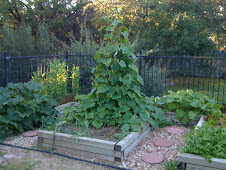When you are ready to build your garden you should have a good idea on where and how big it is going to be. The first step is to mark out the area. Then using a shovel remove any grass shaking off any soil. If you are building a raised bed structure then you will need to build the structure. You can loosen the base by using a fork to loosen and aerate the soil. Then you will want to bring in a good garden mix which includes compost. Check your local garden center to see what they recommend for your area. If you are not creating a raised bed then you will need to make sure that there is about 8-12 inches of loose soil. This may require some effort and once method you can do to achieve this called double digging. You will need a board about 2 ft by 4 feet you can use to stand on while you dig that will reduce any compaction of the soil while you are digging. Walking on the soil once you have loosened it up defeats the purpose so once you have loosened and aerated the soil NEVER walk on it. Starting at one end of the garden use a fork or a shovel to lift up and loosen a row. Take the dirt and place the first row on a sheet of plastic, a bucket or other container. On the second row you will take the dirt and place it in the first row. Each row should be about 8 to 12 inches. On the third row place the loosed dirt in the second row and so on until you reach the end of the garden area. Then take the dirt from the first row and place in the last row. Repeat the whole process but the second time around you will want to stand on a board so you don’t compact the dirt you just loosened. Just move the board back for each row. Once the soil is all loose you will now want to add some compost. Take a fork and lift the compose and the dirt to sift it through the fork prongs to gently combine. Once this is complete your garden is ready for planting although it is better to wait a day or too as some composts need a day to settle in and fresh compost could burn new plants.
Now the fun begins. You need to determine what you will grow. You do need to do some research at this point to find out what grows when in your area. So a find our country agricultural extension and see what they recommend for your area. Next you need to find out if you can plant seeds or if you need to get plants. Your local garden center will once again be a good resource for this as they typically sell plants when it is the correct time to plant them. If you are just starting out we recommend getting the plants but if you have time and want to experiment with setting your own seeds then read the seed labels carefully to determine if you can plant them directly or if they need to be started and then transplanted. Many times depending on the season seed and plant s require a certain temperature so if you start your seed indoors under a grow light and get them to a point where you can transplant them once the right conditions exist outside you can get a jump on your growing season. Pay attention to day time temperature lows and highs. Do not plant your tomato sets until after the last freeze or be prepared to cover them in the event it does freeze.
Subscribe to:
Post Comments (Atom)

No comments:
Post a Comment